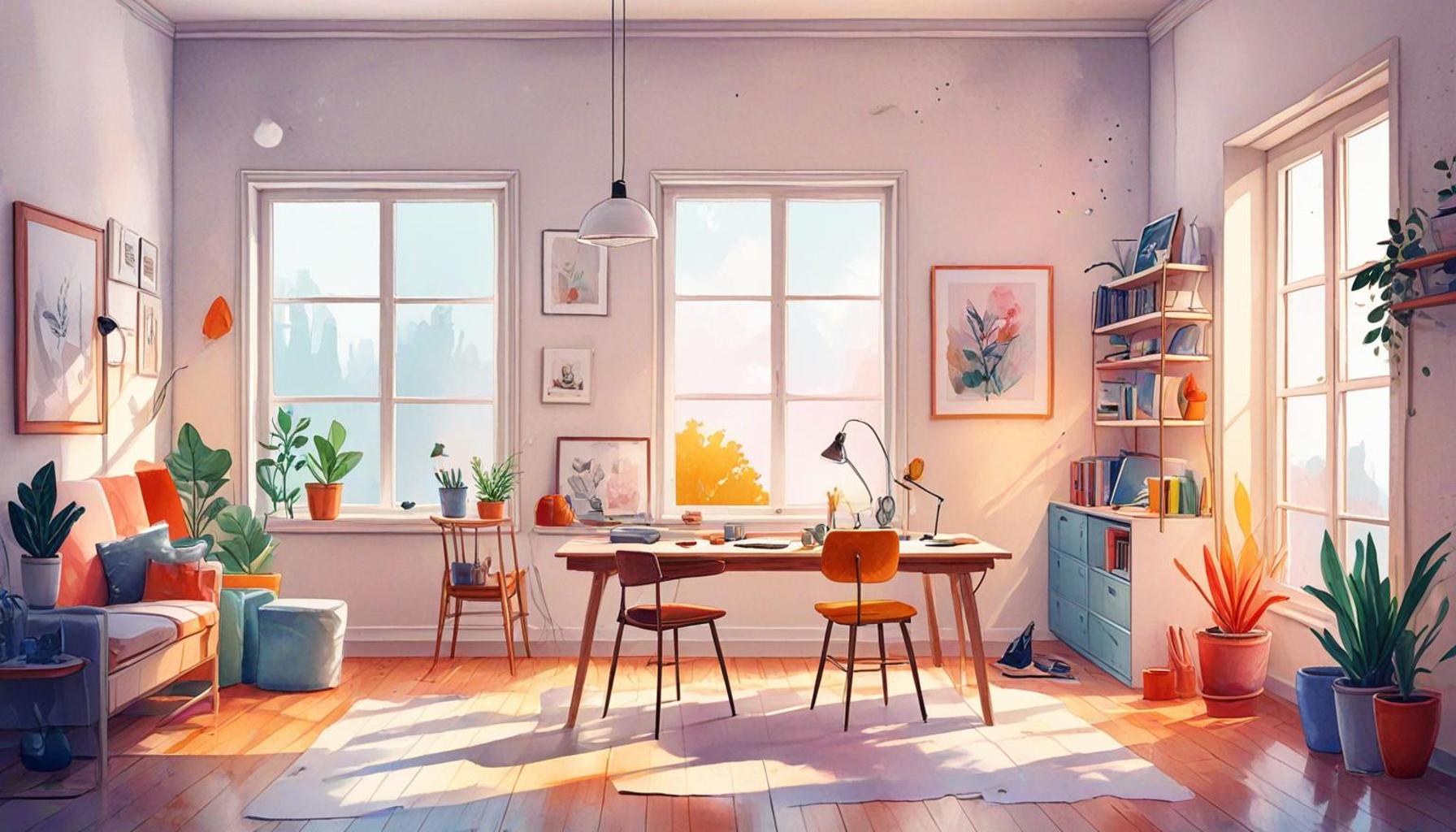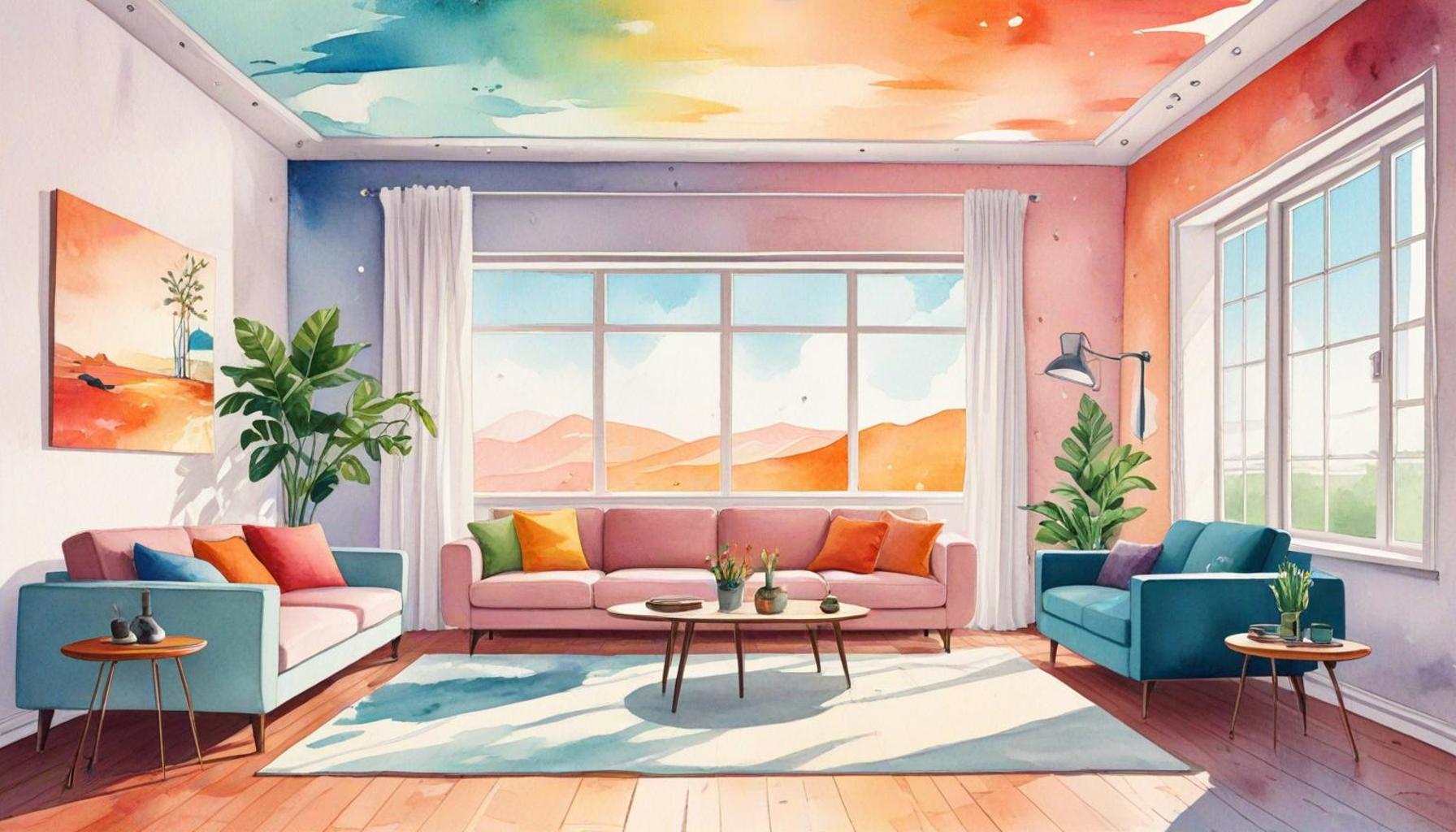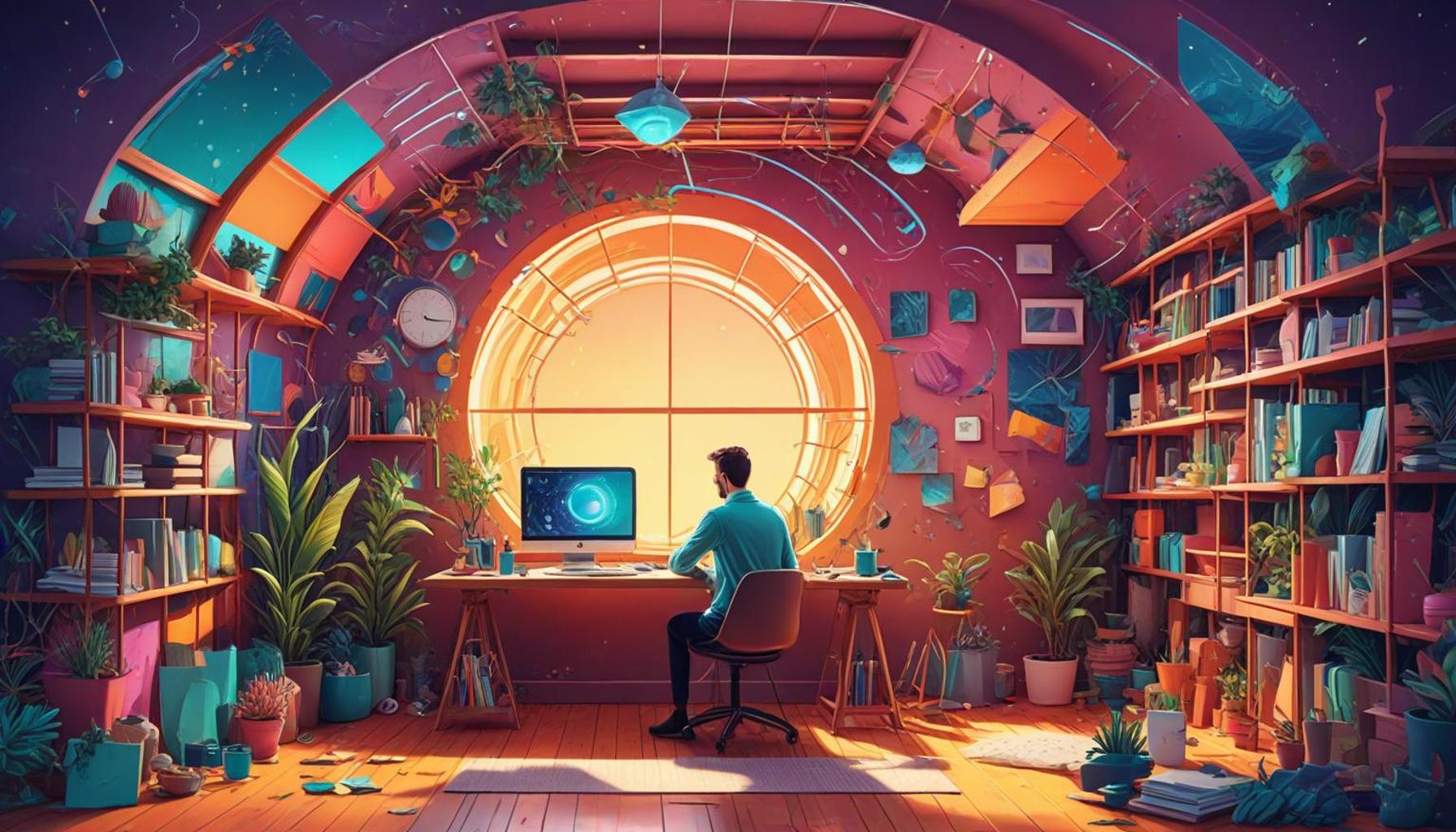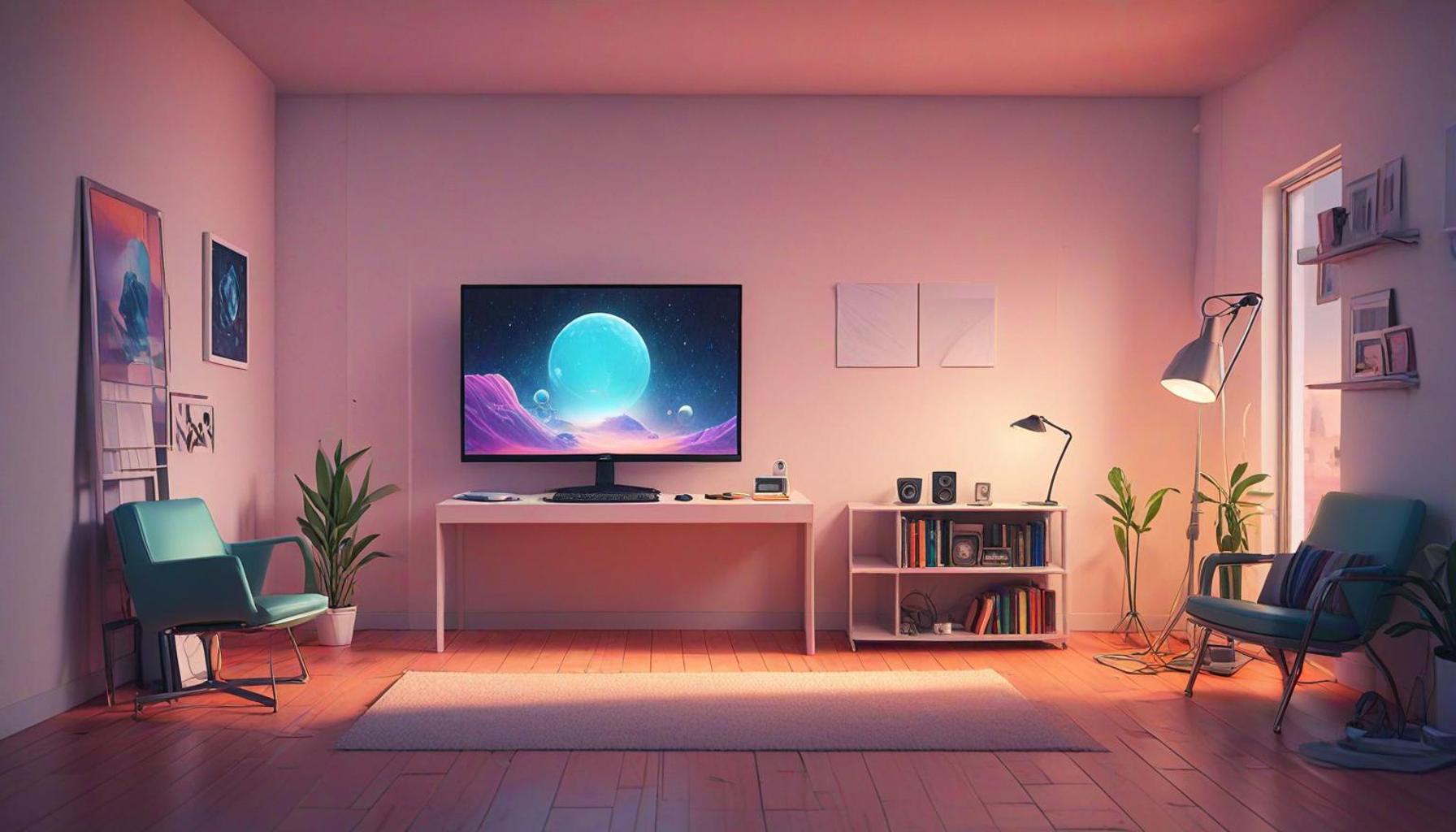The Importance of Lighting in Creativity and Efficiency in Minimalist Spaces

Understanding the Impact of Lighting on Minimalist Design
In today’s fast-paced world, the design of our living and working spaces can significantly impact our creativity and efficiency. Minimalist spaces, characterized by their simplicity and functionality, can either elevate or hinder our productivity, predominantly through the influence of lighting. The art of striking a balance between aesthetics and practicality lies in understanding the multifaceted role lighting plays in minimalist environments.
Natural Light
Natural light is often considered one of the most transformative elements in minimalist design. Harnessing daylight not only creates an inviting atmosphere to abolish that sterile feeling common in overly simplified spaces but also stimulates our sense of well-being. For instance, large windows in a minimalist office setup can reduce the need for artificial lighting during the day, which can lead to lower energy costs and improved mood among employees. Research from the Harvard Business Review suggests that workplaces with an abundance of natural light see employees reporting an increase in mood and satisfaction levels. This phenomenon underscores the idea that the connection to nature fostered by daylight can boost creativity and initiative.
Task Lighting
In addition to maximizing natural light, task lighting is instrumental in enhancing productivity, particularly in spaces dedicated to focused work. Adjustable lamps, such as LED desk lights with dimming features, can provide direct illumination where it is needed most—whether that’s a design studio, a home workspace, or a minimalist kitchen. This focused lighting not only minimizes eye strain but also helps individuals enhance their concentration and precision while tackling intricate tasks. For example, chefs in a minimalist kitchen setting benefit from strategically placed under-cabinet lighting that allows them to prepare meals with utmost clarity and safety.
Color Temperature
The color temperature of lighting within a space is another crucial aspect to consider. Lights categorized as warm—typically ranging from 2700K to 3000K—emit a cozy and inviting atmosphere, conducive for relaxation in residential spaces. In contrast, cooler tones, like those found in modern offices and creative studios, can invigorate the mind and heighten alertness, making them suitable for brainstorming or intensive work sessions. For instance, a tech startup may opt for bright, cool LED panels that can support high levels of focus, as well as adaptive lighting systems that transition from cool to warm as the day winds down, promoting a natural circadian rhythm.
Ultimately, the right lighting can transform a bland, sparse room into a vibrant workspace or a serene sanctuary. Its effects extend beyond mere aesthetics; studies indicate that well-lit environments are linked to higher levels of inspiration and productivity. By incorporating thoughtful lighting solutions, individuals can create spaces that foster creativity, enhance efficiency, and promote mental well-being.

As we delve deeper into the nuances of lighting within minimalist spaces, we uncover how purposeful illumination is crucial in optimizing performance. More than just an accessory, lighting serves as a foundation upon which the ethos of minimalism can thrive. Seek to embrace the idea that your surroundings can shape your thoughts, feelings, and overall effectiveness, and consider how you might enhance your own spaces for greater comfort and productivity.
DIVE DEEPER: Click here to unlock productivity tips
Embracing Functional Design: Types of Lighting in Minimalist Spaces
When it comes to crafting a minimalist space, the careful selection and application of lighting can have profound implications for both creativity and efficiency. Beyond aesthetics, the right lighting can transform how we experience our environments and influence our productivity. To achieve an optimal balance, it is essential to consider various types of lighting, each tailored to meet specific needs within a minimalist framework.
Ambient Lighting
Ambient lighting serves as the foundational layer of illumination, providing soft, overall brightness that fills every corner of a space. This type of lighting not only enhances visibility but also creates a warm and inviting atmosphere, essential for settings that prioritize comfort and relaxation. In minimalistic designs, ambient light sources—such as ceiling fixtures, floor lamps, or strategically placed wall sconces—should blend harmoniously with the overall aesthetic. For example, a carefully chosen pendant light can become a statement piece while ensuring that the room is adequately lit.
Accent Lighting
Accent lighting, on the other hand, adds depth and character to minimalist spaces, highlighting architectural features or artwork without overwhelming the senses. By directing light onto specific focal points, such as a sculpture or a beautifully arranged bookshelf, accent lighting draws the eye and enhances the room’s overall design appeal. Track lighting and adjustable spotlights are excellent choices for this application, allowing homeowners to customize their lighting based on mood and occasion. The subtle interplay of light and shadow not only enriches the visual experience but can also inspire creativity, as spaces appear dynamic and ever-evolving.
Layering Light for Versatility
To truly capitalize on the cognitive and emotional benefits of lighting, it is vital to incorporate a layered lighting approach. This method combines ambient, task, and accent lighting to create a versatile environment that adapts to various needs throughout the day. Consider the following elements for effective layering:
- Dimmer Switches: They allow users to adjust light intensity based on the time of day or specific activities.
- Smart Lighting Systems: These can be programmed to mimic natural light patterns, supporting our circadian rhythms.
- Combining Light Sources: Utilizing multiple light sources with varying color temperatures can create depth and flexibility in design.
When thoughtfully orchestrated, a layered lighting strategy not only elevates the aesthetics of minimalist spaces but also fosters an environment that enhances efficiency and sparks creativity. In workplaces, this could mean transitioning from bright, focused lighting during brainstorming sessions to softer, ambient lighting during breaks, allowing individuals to recharge or reflect.
As we continue to explore the integral role of lighting in minimalist environments, we will discover more about how this essential design element fosters balance and harmony, ultimately guiding us toward improved mental clarity and inspiration.
| Advantage | Description |
|---|---|
| Enhanced Focus | Proper lighting in minimalist spaces reduces distractions, allowing for improved concentration. |
| Mood Elevation | Natural light can significantly boost creativity and mood, inspiring innovative ideas. |
| Spatial Perception | Thoughtful lighting design enhances the perception of space, making areas feel larger and more open. |
| Energy Efficiency | Utilizing LED lights in minimalist settings reduces energy consumption, contributing to sustainability. |
The dynamics of lighting play an essential role in fostering an environment where creativity thrives. In minimalist settings, where space and elements are carefully curated, the significance of light becomes increasingly apparent. Optimizing natural light not only enriches the aesthetic but also improves overall well-being. As individuals engage in their creative processes, the quality and angle of light influence their productivity levels. Artistic endeavors, from writing to design, benefit immensely when the lighting is both functional and atmospheric. Moreover, balancing various lighting sources—ambient, task, and accent—enables adaptability to different activities, ensuring efficiency throughout the day.Additionally, implementing light-responsive technologies can lead to further energy savings, ensuring that minimalism extends beyond aesthetics into broader ecological impacts. A well-lit space does not just enhance visuals; it shapes an entire lifestyle, inviting deeper engagement with the work and surrounding environment. The interplay of lighting illustrates its critical value in defining creativity and efficiency within the nuances of minimalist spaces.
DISCOVER MORE: Click here to uncover the secrets of a minimalist lifestyle
Creating Atmosphere: The Role of Color Temperature in Lighting
A vital aspect of lighting that significantly affects both creativity and efficiency is the color temperature of the light. Color temperature, measured in Kelvins (K), can range from warm yellow hues (around 2700K) to cool blue whites (up to 6500K). The choice of color temperature can alter perceptions, moods, and even cognitive performance. For instance, warmer light is often associated with comfort and relaxation, making it ideal for residential spaces or areas where personal creativity flourishes. Conversely, cooler, more brilliant light is linked to increased concentration and alertness, perfect for workplaces or study areas in minimalist environments.
In a minimalist office, incorporating LED lighting with an adjustable color temperature can greatly enhance productivity. Many modern LEDs allow users to shift from a cooler daylight spectrum during intense work hours to a warmer hue during relaxing breaks. Research indicates that environments that adapt in color temperature help maintain focus and reduce fatigue, fostering a workspace that can dynamically accommodate various tasks without sacrificing the minimalist aesthetic.
The Psychological Impact of Natural Light
While artificial lighting provides versatility, the influence of natural light in minimalist spaces cannot be overstated. Studies have shown that exposure to natural light elevates mood and stimulates creative thoughts, which align perfectly with the principles of minimalism—creating an uncluttered and soothing environment. Design choices, such as large windows, skylights, or strategically placed mirrors, can maximize natural light entry, enriching the aesthetic while enhancing efficiency.
Moreover, integrating plants and greenery within a minimalist design leverages the benefits of natural light. Houseplants, which thrive in well-lit spaces, not only purify the air but also elevate the overall design, encouraging a sense of well-being and clarity. Consider implementing a biophilic design approach, which emphasizes the connection between nature and the built environment, fostering creativity and mental stimulation.
Task Lighting: Customizing Your Work Environment
For many in creative professions, the right task lighting is essential for fostering an efficient workspace. Task lighting focuses brightness precisely where it’s needed, whether it be at a desk, a workshop, or reading area. Examples of effective task lighting in minimalist designs include adjustable desk lamps, under-cabinet lighting in kitchens, or even clip-on lights for artists. By minimizing shadows and highlighting workspaces, this targeted illumination allows individuals to concentrate better on their tasks.
Additionally, utilizing light fixtures that minimize visual clutter can enhance the minimalist ethos. Opting for a single adjustable lamp instead of multiple sources can maintain a clear space while still offering functional illumination where needed. This not only embodies the minimalist philosophy of ‘less is more’ but also creates a more efficient and inspiring work environment.
Conclusion: The Multifaceted Nature of Lighting in Minimalism
In summary, lighting in minimalist spaces extends far beyond mere functionality; it serves as a potent catalyst for creativity while enhancing efficiency. By thoughtfully integrating various lighting types, colors, and natural elements, one can create environments that not only look spectacular but also invigorate and inspire. As we harness these elements, we pave the way for a tranquil yet motivating atmosphere that embodies the best of minimalist design, fostering innovative thinking and sustained productivity.
DISCOVER MORE: Click here to streamline your daily organization
Conclusion: Cultivating Creativity and Efficiency Through Thoughtful Lighting
As we have explored, the role of lighting in minimalist spaces transcends basic illumination; it holds transformative power over creativity and efficiency. By selecting the right color temperature, we can significantly influence how a space feels and functions, forging connections between environment and productivity. The psychological benefits of natural light from thoughtfully placed windows or skylights further enhance well-being, promoting an atmosphere conducive to innovative thinking. Additionally, features such as task lighting play a critical role in minimizing distractions, allowing individuals to focus on their work while maintaining the minimalist ethos of simplicity.
Investing in a nuanced approach to lighting design not only beautifies a space but also promotes mental clarity and efficiency. In a world where distractions are abundant, intentional lighting becomes a necessary tool for cultivating calm and productive environments. For those looking to optimize their homes or workplaces, experimenting with adjustable lighting options and integrating nature can lead to enriched experiences and heightened creativity. The true essence of minimalism lies in understanding how every element, especially lighting, can work together harmoniously to support and inspire. Moving forward, let us embrace lighting as a crucial element in designing spaces that not only prevent clutter but unlock our full creative potential.



